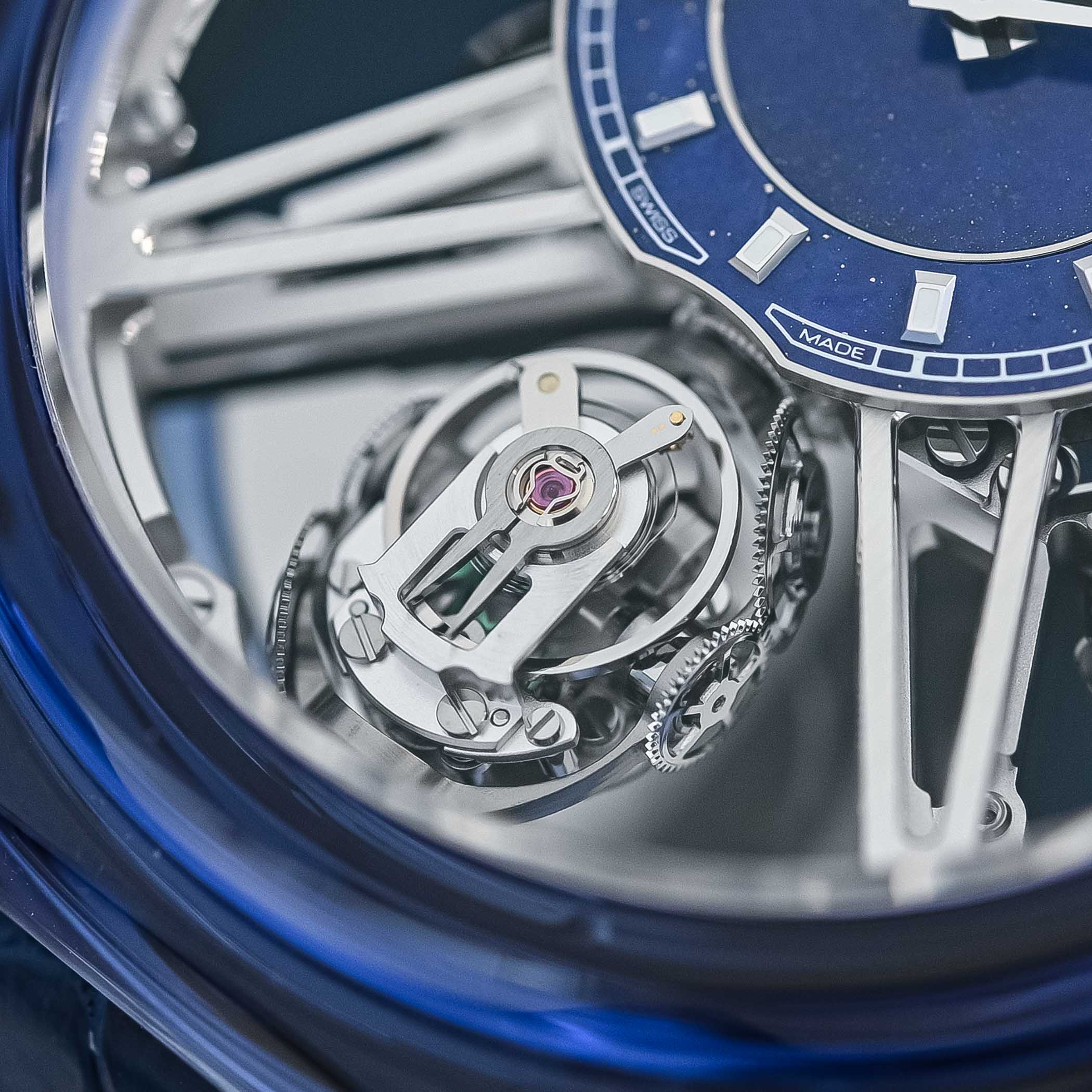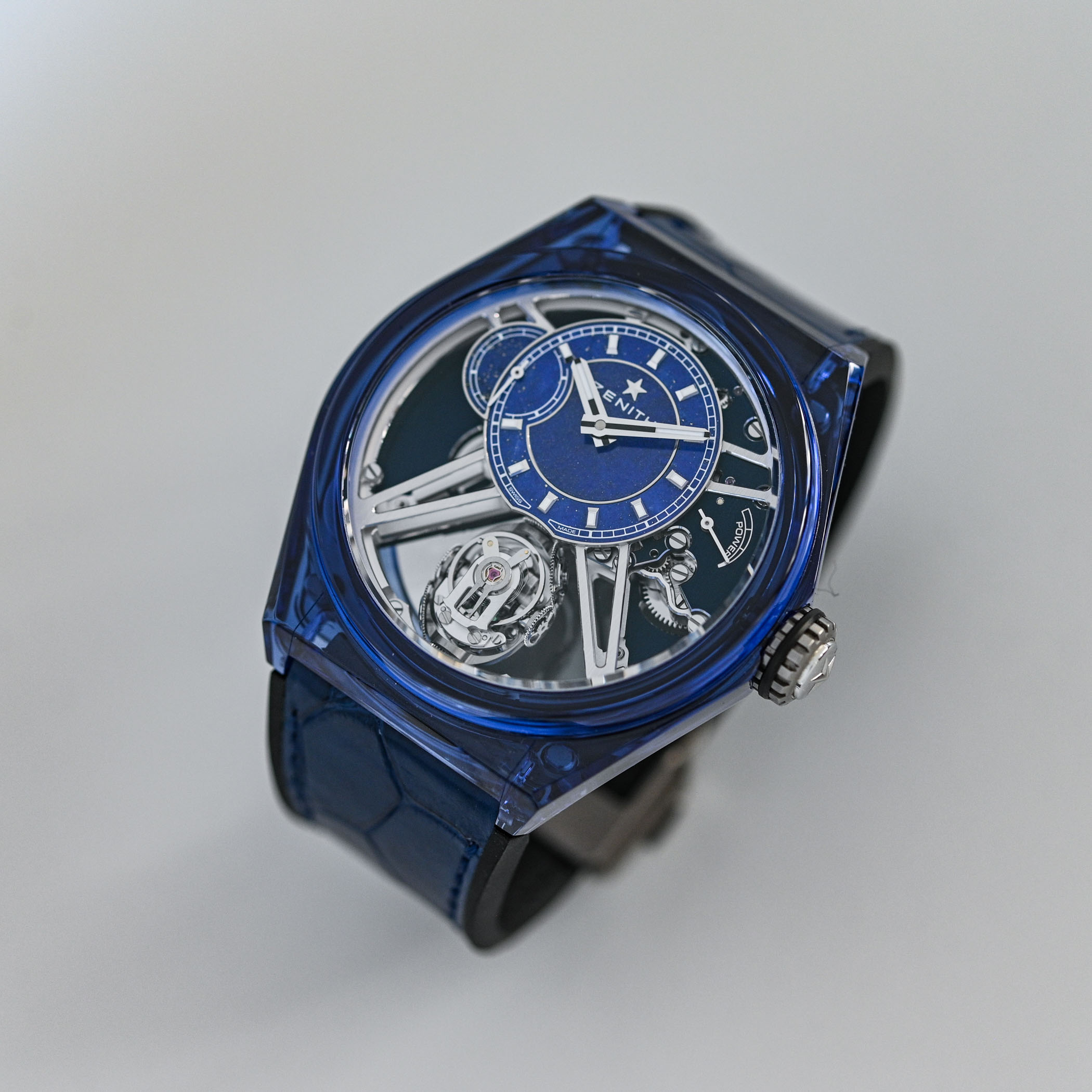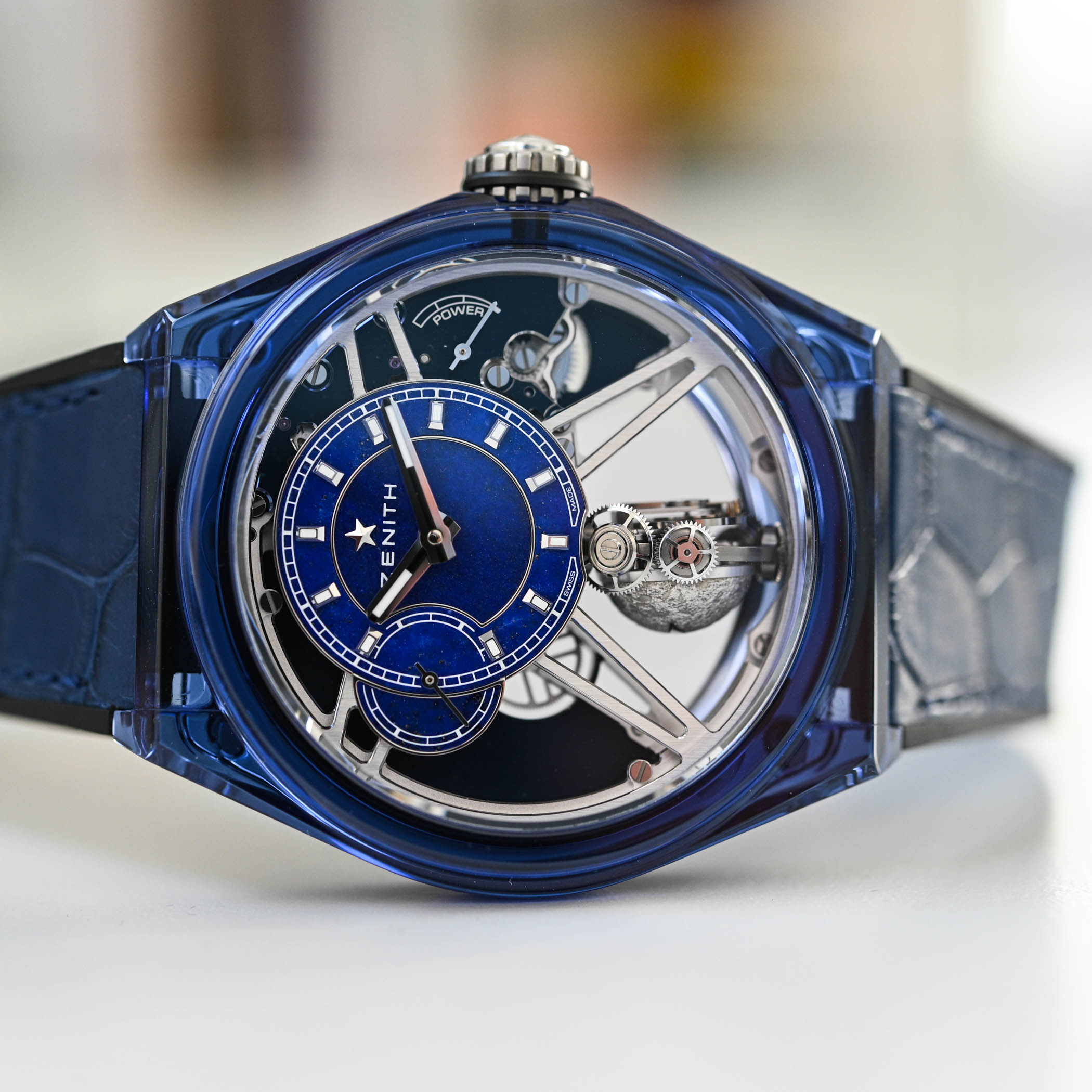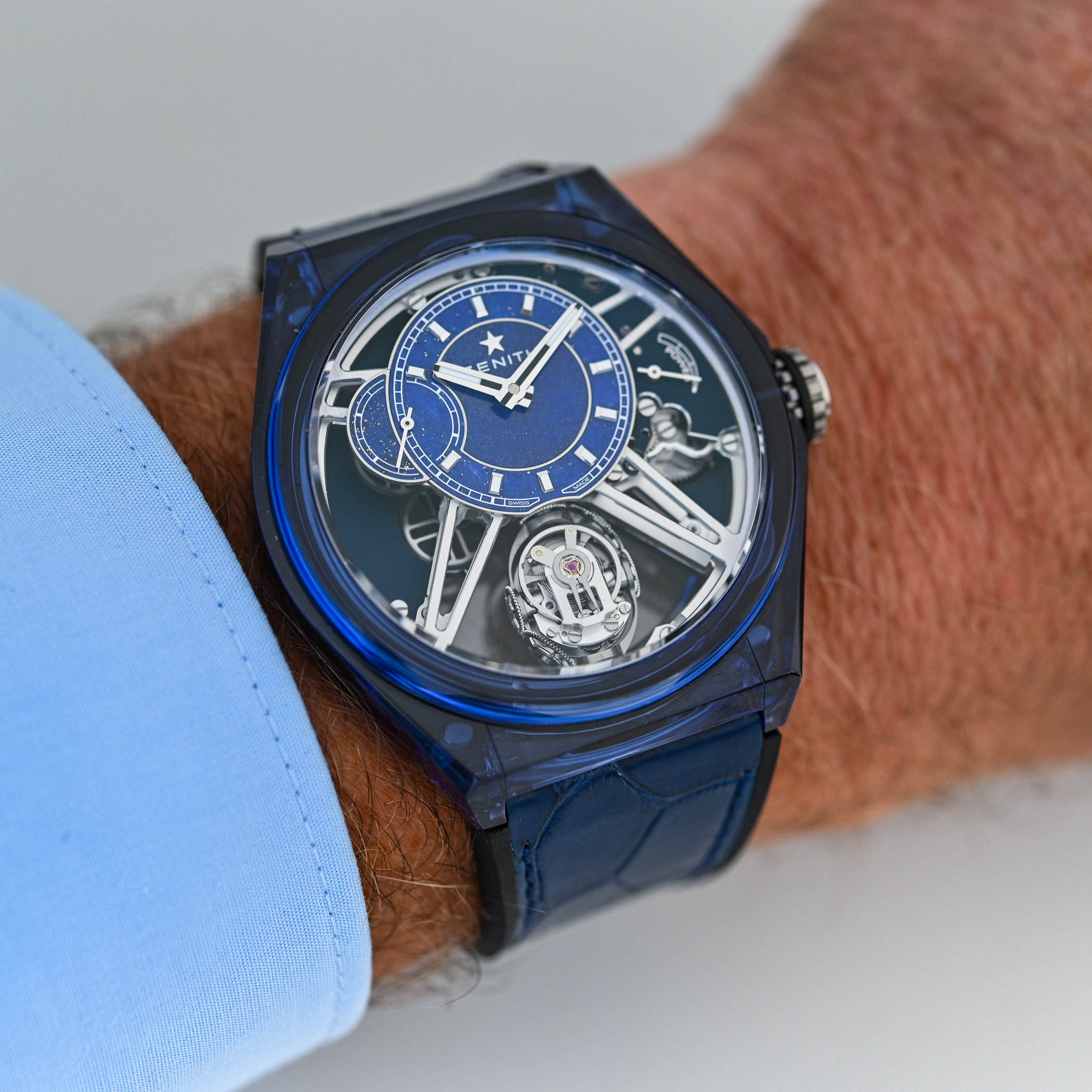This year, Zenith celebrates its 160th anniversary, which has already been celebrated with the launch of several watches in a blue design. With this special collection, the brand expects an encore of its best watches or movements, including the return of the legendary Caliber 135. The story continues today with two very limited Defy Zero G models, milled entirely from sapphire: one blue tinted and the other crystal clear. We spent some time with the blue variant of this watch, which features Zenith's unique version of the anti-gravity escapement.
The Zero-G concept
The Zenith Zero G, a patented, gimbal-mounted escapement, was first developed for the wrist in 2008 with the Defy Xtreme Zero-G. This debut featured the gyroscopic “Gravity Control” module beneath a distinctive sapphire bubble, allowing the balance wheel and escapement to remain perfectly horizontal as the watch moved; it was spectacular but bulky. The concept matured in the Academy Christophe Colomb series (2010s), in which the gyroscope was placed in classically designed parts. The series examined complications surrounding the module, particularly the Christophe-Colomb equation of time, and positioned Zero G as a viable alternative to the tourbillon: instead of averaging position errors, the gimbal compensates for them by keeping the regulator at altitude in real time.


Wearability came with the Defy Zero G in 2018, when Zenith redesigned the Gravity Control cage to 30% of its original volume, removed the dome, and installed the module neatly between flat crystals in a 44mm titanium or rose gold case with 100m water resistance. In 2021, Zenith launched the Defy Zero G made entirely of sapphire crystal. The movement has been redesigned for greater openness and housed in the sapphire crystal case center, bezel and back, allowing the gyroscope module to be visible from almost any angle.
The new sapphire colored Defy Zero G editions
On the new Zenith Defy Zero G, the 46mm case, bezel and back are made from deep-toned blocks of sapphire, allowing you to view the mechanism from any angle. The blue edition bathes the architecture in a deep, heavenly color; The edges are razor-sharp, the surfaces are virtually scratch-resistant and the entire assembly is sealed waterproof to a depth of 30 m.


The time is displayed decentrally at 12 o'clock on a lapis lazuli subdial, each stone is unique, with faceted, rhodium-plated hands and markings with SLN C1. The small seconds is located at 9 o'clock, with a power reserve indicator closer to the horizontal center of the watch on the crown side. The rest is deliberately open: slim bridges reminiscent of stars in alternating blue and rhodium reveal the Zero G module at 6 o'clock and the hand-wound El Primero 8812S movement. A laser-decorated platinum counterweight on the module references the watch's celestial theme.


Zenith's Zero G is one of those ideas that's worth a second look because it neutralizes position errors in real time. Instead of averaging the effects of gravity like a tourbillon, Zenith fixes it at the source: the balance wheel and escapement are mounted on a weighted, two-axis gimbal so that they always remain horizontal regardless of the watch's orientation. Torque from the barrel is redirected via conical bevel gears and a miniature differential that maintain power flow to the escapement when the module is tilted. The latest Gravity Control assembly is the same as the one introduced in 2018, consisting of 139 components and running on nine ceramic ball bearings. The 8812S beats at 36,000 vph for high rate stability, offers approximately 50 hours of power reserve and features a silicon escape wheel with nickel-silicon lever and a double-arrow regulator.


Both new Defy Zero G Sapphire versions come on a blue alligator strap with rubber lining and a titanium folding clasp. Each variant is limited to 10 pieces, as is the price 200,000 francs or 220,000 euros. Further details at www.zenith-watches.com.
https://monochrome-watches.com/zenith-defy-zero-g-sapphire-limited-edition-price-review/